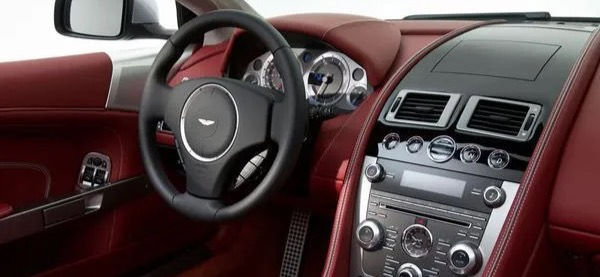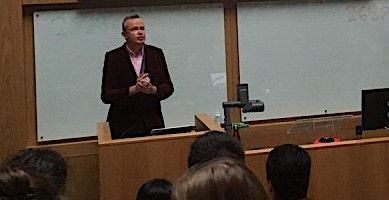Don't Live In Boxes
- Bailey Tuddenham

- Jan 19, 2023
- 5 min read
Updated: Apr 14, 2023

We've grown up with all sorts of cars. Cars are strange. We get emotionally attached to cars more than a lot of other products we buy; well maybe that's just me? I believe that there are certain products that we grow so close to that they're no longer products; they're characters. And when they become characters, we stop "interacting" with them and start "communicating" with them. It's very different, and something that I feel a lot of us experience with our cars. To design a product that becomes a character, something that people want to communicate with rather than interact with, is almost unimaginable.
Ian Callum is responsible for almost half of the cars my family has had as I've grown up, as well as some of my favourite cars, too. We've always been as Aston Martin family. That's my Dad's fault. He had always wanted an Aston Martin since a young age, and had saved over a long period of time to be able to afford one. My Mum was mostly happy with him buying one, on one condition; no red interiors. Apparently that "screams mid-life crisis". After Ian Callum's talk, I had a 30 minute one-to-one conversation with him, during which I mentioned how our current Aston Martin DB9, one of Ian's finest creations, is currently stuck in a garage with an electrical fault. His response was "sounds about right", which was strangely amusing; we laughed.

Ian coming in to talk was exciting. In all honesty, I'm not always hugely excited for talks at GSA, but this one was different. I was sat in the auditorium strangely early, discomposed and almost agitated in anticipation of Ian's arrival. I felt like a 12 year old girl at her first Justin Bieber concert. I don't know why... Odd. I think I was just excited to actually see and hear from someone that has genuinely had such a huge impact on the world, and who has created products that I honestly adore and have personal connections and memories with.
"There he is"
"That's Ian Callum"
"He looks different to what I expected"
"I wonder what he'll say"
These are just some of the things I heard from other students as Ian walked into the room. There was a genuine excitement amongst people that I hadn't heard at GSA before. I think people knew how big of a deal this was; how much we could gain from this presentation and the opportunity to hear from, arguably, one of the best designers in modern Britain.
Ian gave a presentation on his work over the past 45 years, and his main tips and philosophies when it comes to design. It didn't disappoint. He made lots of interesting points, and his viewpoints on simplicity in design were extremely refreshing, as this is something that I try and work on every day. I made a note of some of the things that he said during this presentation, and I'll discuss why I felt they were important enough to put pen to paper (Apple Pencil to iPad) and write down:
"Have a point of view. If you just follow the flow of things, you're just left with mediocrity.""
This one speaks for itself really. I think it's almost impossible to be truly creative unless you have a point of view. You have to be willing to challenge the status quo, engage in discussions and debates and be radical in the way that you see the world. People like Steve Jobs and Elon Musk didn't create the iPhone and SpaceX by following the flow and sticking to that they knew.
"Critique your work as if someone else has created it."
This was probably one of my favourite takeaways from the whole presentation. I believe that it's extremely important in the industry that we work in to be able to be critical of your own work. Taking a step back and looking at your work as if you hadn't done it is a really interesting way of self-evaluating what you've done. It forces you to think less about yourself and how the product / design relates to you on an individual level, and consider the product from other people's potential point of views.
"Design creates order out of chaos. However, chaos is often required as a pre-requisite to being creative."
Being chaotic as a designer is a necessity. Innovation doesn't come from being over-cautious and sticking to what you know will work. I completely agree that you should always start out chaotic when conceptualising designs and ideas, and refine that chaotic, initial idea over time to create something that's simple and orderly.
"Form and function must relate and take place in order. We must define that order, from a scale of practicality and emotion."
&
"Beautiful in function, beautiful in form."
Ian spoke a lot about the aesthetics of a product versus it's functionality, which was where these quotes came in. He mentioned that he feels it's important to consider both when designing a product, but to also consider which of those comes first when designing that particular object. I am a strong believer in the importance of aesthetic in product design, and I feel it gives so much more to a product than just a nice look. However, I also agree that there are circumstances for particular products in which the functionality is much more important than the aesthetic, and must come first when "defining that order".
"It is very hard to be simple enough to be good."
As I mentioned earlier, it was extremely refreshing to hear Ian referring to simplicity in design; something that I am very interested in. I personally believe that the best products are those that are able to bring order to huge complexity. Products such as the iPhone are so complex in their nature yet, through the way they've been designed, are so simple to use. This is an extremely difficult thing to do, and it's even more difficult to balance simplicity in a design with a "lack of design" from the point of view of a member of public.
"People always want to put things in boxes. Don't live in boxes."
This was another one of my favourite quotes from the presentation. It was a completely unscripted, off-the-cuff comment that Ian made when talking about his time at Jaguar. I think it's always important, in this industry and outside of it, to think outside the box, and to not let others barricade your creativity. Don't stay inside a box, and don't let anyone else keep you inside a box, either.
"You have to start somewhere."
This one is really simple, but meaningful. Even when projects look like they're not going your way, its better to have made a start than to not try at all.
"Good design will always be relevant, regardless of age. It's the details which age."
This resonates across so many products in history. Key products in the distant and near past still have an affect on what we design today, how we design today and how we got to where we are today. Products such as the iPhone inspired almost all consumer technology being created today, and will always be relevant. Manufacturing processes designed by Henry Ford have inspired new processes across many car factories today, and will, too, always be relevant. The list could go on.
"Understand the bigger picture to create smaller solutions."
When I was on an internship at Amazon, I was asked to fix a system used by warehouse staff when packing products to be shipped. In order to know where to start with that project, I spent a week working on the warehouse floor with the warehouse staff, discussing issues they face across all sectors; picking, packing, sorting. This gave me a basic idea of everything that was going on in the warehouse, and allowed me to experience the issues first hand. Had I not done that, I believe it would have taken me a lot longer to come up with my eventual refined solution to the issue I was tasked with fixing.
"Keep it simple."
.



